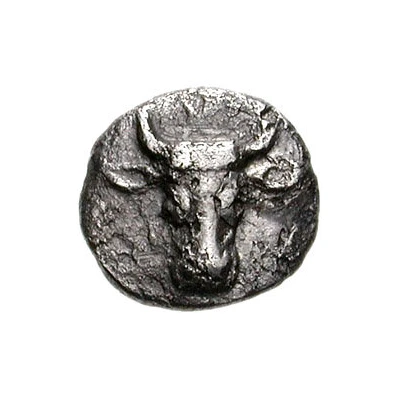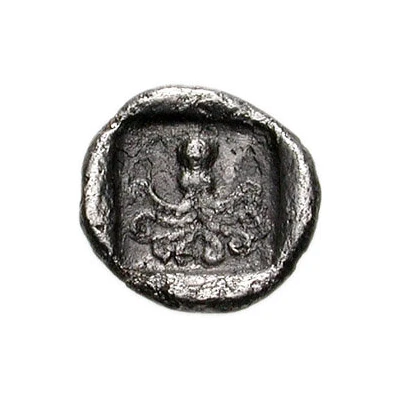


© Classical Numismatic Group, Inc.
Obol 500 BC - 465 BC
| Silver | 0.54 g | 9.0 mm |
| Issuer | Eretria (Euboia) |
|---|---|
| Type | Standard circulation coin |
| Years | 500 BC - 465 BC |
| Value | Obol (⅙) |
| Currency | Drachm |
| Composition | Silver |
| Weight | 0.54 g |
| Diameter | 9.0 mm |
| Shape | Round (irregular) |
| Technique | Hammered, Incuse |
| Orientation | Variable alignment ↺ |
| Demonetized | Yes |
| Updated | 2024-10-09 |
| Numista | N#145743 |
|---|---|
| Rarity index | 95% |
Reverse
Octopus in incuse square
Interesting fact
The Obol coin was used as a form of currency in ancient Greece, specifically in the city-state of Eretria (Euboia) during the 5th century BC. It was made of silver and weighed approximately 0.54 grams. Despite its small size, the Obol coin played a significant role in the economy of the time, as it was used to purchase everyday items such as food, clothing, and other necessities. Its design featured an image of a dolphin, which was a symbol of the city-state and represented its maritime power and trade connections. The Obol coin was also used as a means of payment for soldiers and civil servants, highlighting its importance in the functioning of the ancient Greek society.